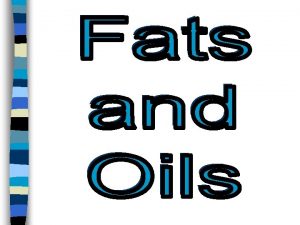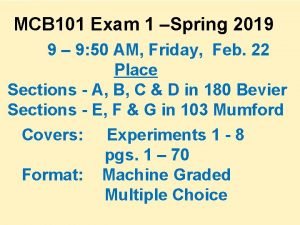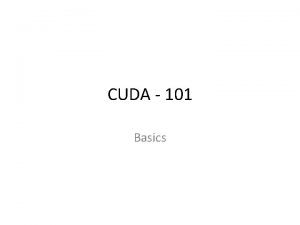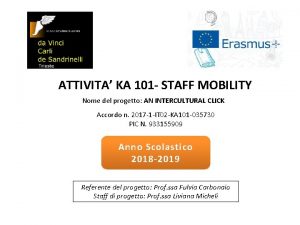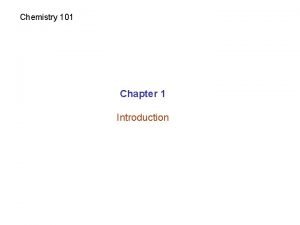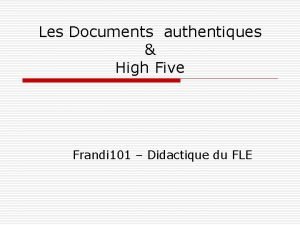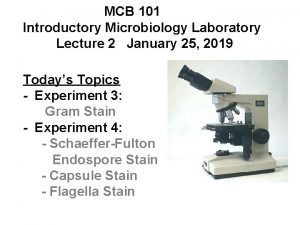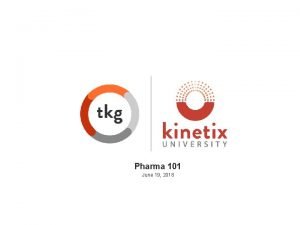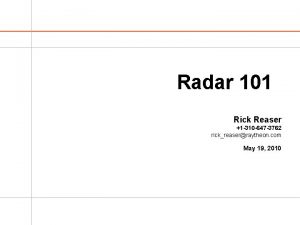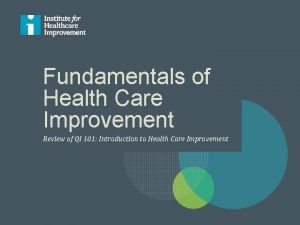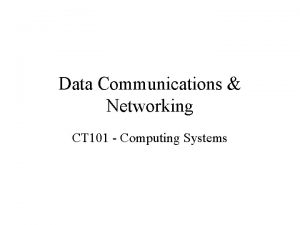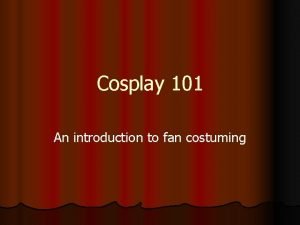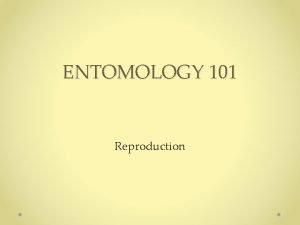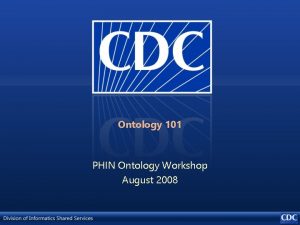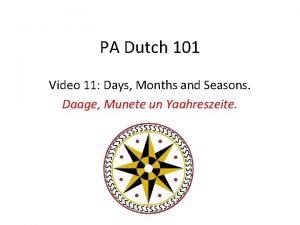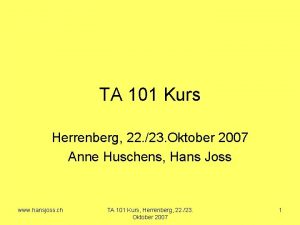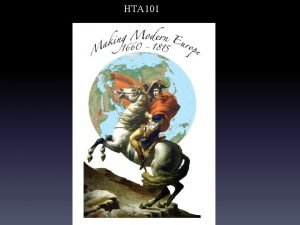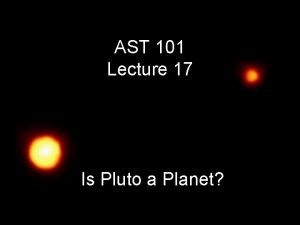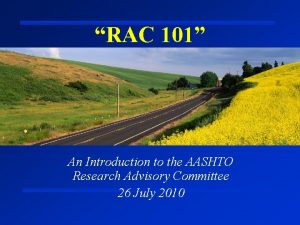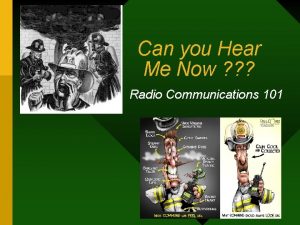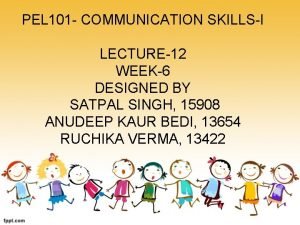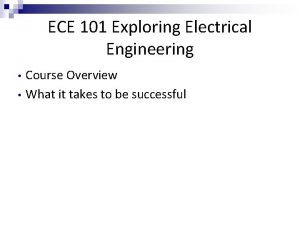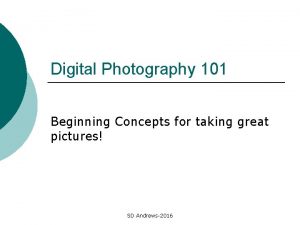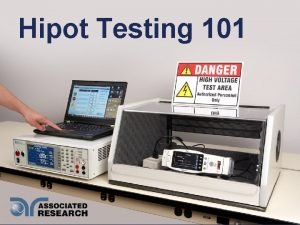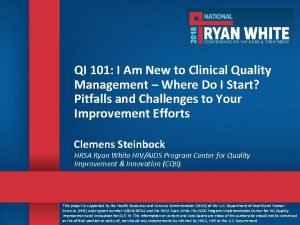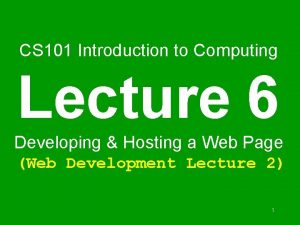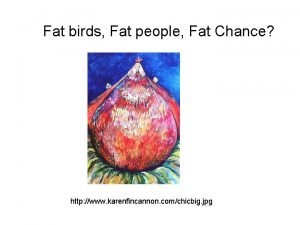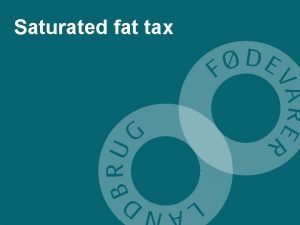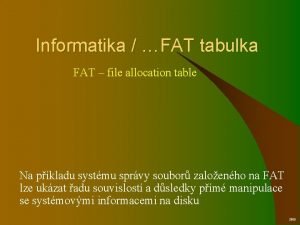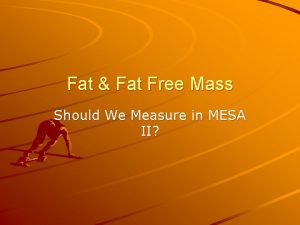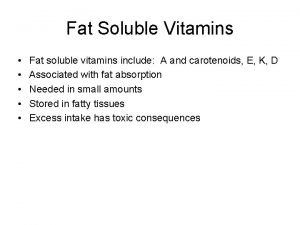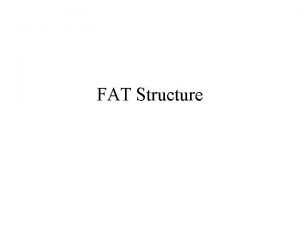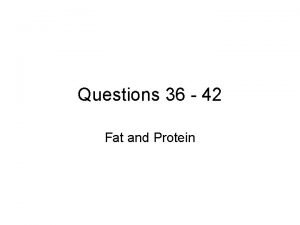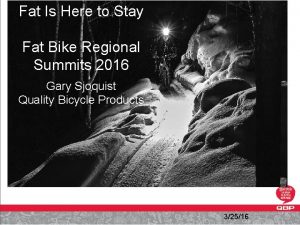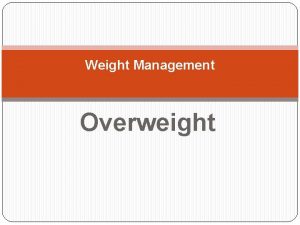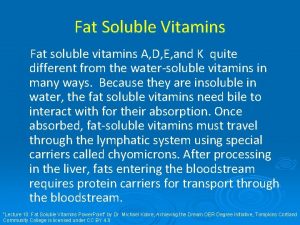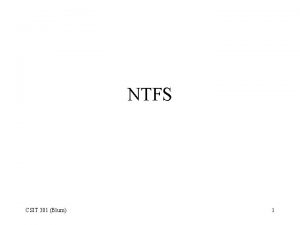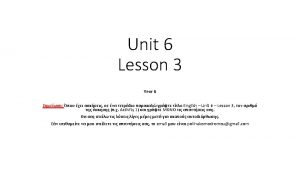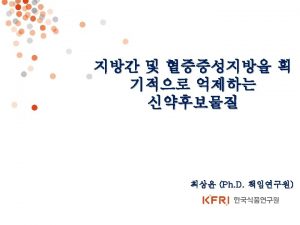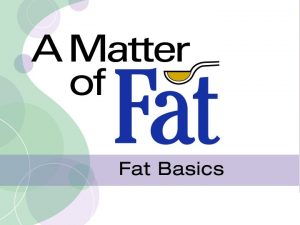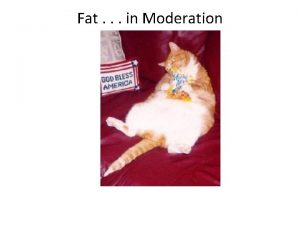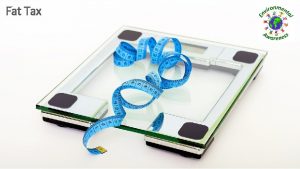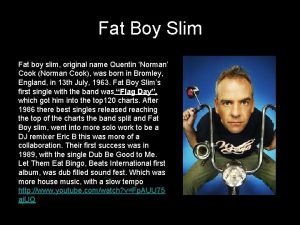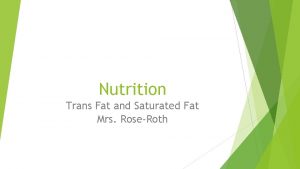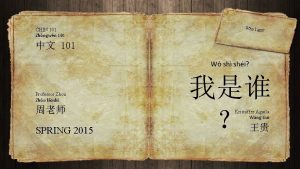FAT S Fat 101 1 Fat is a































- Slides: 31

? FAT S

Fat 101 Ø 1) Fat is a necessary part of the diet Ø 2) Fat is one of the most concentrated sources of energy in our diets Ø 3) Fat gives you __? _/grams Other Energy Sources… • Carbohydrate • Protein

The Benefits of Fat in Our Diets Ø Some fat in our diet helps us absorb and act as a carrier for certain vitamins – Fat Soluble Vitamins A E D K Ø Fats act as a reserve supply of energy Ø Protects internal organs from shock and injury Ø Insulates the body from shock and temperature changes Ø Help us feel satisfied and cause us to feel full longer Ø Some types provide essential fatty acids Ø Adds Flavor and texture to food Ø Promotes healthy skin

Is Sugar the same as Fat? Ø No! Sugar is a simple carbohydrate. A teaspoon of sugar, or… 16 calories A teaspoon of butter 36 calories Fats are almost double the calories and too many can cause weight gain.

How Much Fat Do We Need? Ø Men = 30– 60 grams Ø Women = 20– 40 grams Excess fat will be stored as adipose tissue (body fat) 7 grams 25 grams Large

How can you tell if a food is high in FAT? Greasy Squishy Shiny Creamy Smooth Tender Buttery Oily Slippery Rich Refried

THE RULE OF WHITE

What is cholesterol? Ø Cholesterol is not fat. Ø Skin Tissue- It is a “fat like” substance present in all body cells that is needed for many essential body processes. Ø It contributes to the digestion of fat and the skin’s production of vitamin D. Ø Bodies produce all the cholesterol they need, mostly in the liver. Ø All animals have the ability to manufacture cholesterol.

Ø Because all animals make cholesterol, if you eat any animal product, including meat, poultry, and fish, you are consuming extra cholesterol.

Cholesterol Ø A certain amount of cholesterol circulates in the blood. Ø It does not float through the bloodstream on its own, but in chemical “packages” called lipoproteins. There are 2 main types of lipoproteins. Ø 1. LDL’s (Low-Density Lipoproteins) Ø 2. HDL’s (High-Density Lipoproteins)

LDL- “Loser” Ø If there is too much LDL cholesterol circulating, the excess amounts of cholesterol can build up in artery walls. Ø This build up increases the risk of heart disease or stroke. Ø Thus, LDL cholesterol has come to be known as bad cholesterol.

HDL- “Heaven” Ø Picks up excess cholesterol and takes it back to the liver, keeping it from causing harm. Ø Thus, HDL cholesterol has come to be known as “good cholesterol”.

Ø 8) The Amounts and Types of fats eaten have a greater effect on blood cholesterol than does the cholesterol itself.

Ø 9) Fatty Acids: Chemical building blocks for fats and oils

All fats are not created equal! A break down of fat

Solid Fat BAD Ø Solid at room temperature. Ø Are considered the worse type of fat. Shortening

Visible Fats Fat that is easily seen Ø Examples: Butter on a baked potato, layer of fat around a pork chop, etc.

Two Types: Solid Fat Ø 1) Saturated • Sources: Animal Products: Butter, steak, bacon, milk • Raises LDL & HDL Ø 2) Trans fat • Sources: foods with a long shelf life like cookies, doughnuts, imitation cheese • Raises LDL & HDL BAD

Trans Fat Ø Doughnuts and pastries Ø Deep fried foods such as fried chicken and French fries Ø Imitation cheese Ø Snack chips Ø Cookies and crackers Ø Research have correlated trans fat intake with • Heart disease • Diabetes • Cancer and many other health concerns

Hydrogenated Fat Ø Hydrogenation is the process where Hydrogen (H) atoms are added to a liquid fat to make it a solid fat (such as margarine). H H H + Ø Trans Fats are formed in the hydrogenation process. This process helps foods stay fresh on the shelf longer.

Let’s learn a little more about artificial TRANS FAT Ø http: //www. wimp. com/whatfat/

D O GO Liquid Fat Ø Liquid at room temperature. Ø Heart Healthy- considered the better type of fat. Ø Essential Fatty Acids Sources: Ø Plants Ø Fish Ø Nuts

Invisible Fats that cannot be detected by the eye Ø Examples: nuts, avocados, olives etc.

3) Polyunsaturated Fatty Acids… Ø Acceptable but use sparingly Ø Lowers good cholesterol (HDL ↓) and lowers bad cholesterol (LDL↓) Ø Sources: • Oils: corn, cottonseed, safflower, soybean, and sunflower oil • Walnuts, sunflower seeds • Fish

4) Monounsaturated Fatty Acids… Ø Best for your body Ø Raises good cholesterol (HDL↑) and lowers bad cholesterol (LDL↓) Ø Sources: • • Canola, olive, and peanut oils Avocado Almonds, cashews, pecans, and peanuts Sesame seeds

REVIEW The Good Ø We need a small amount of fat in our diets • Carrier for vitamins A, D, E, K • Insulator/Internal Protection • Energy Ø Polyunsaturated • Lower HDL & LDL Ø Monounsaturated • Raise HDL & lower LDL

The Bad Ø Too much fat leads to weight gain. Ø Saturated- solid at room temperature Ø Trans- Longer shelf life

The Ugly- Too Much Fat Ø Americans not only eat too much fat, but the wrong kinds of fat. Ø Doing so can increase risk of serious health concerns Ø Heart Disease Ø Obesity Ø Cardiovascular related problems.

FAT DANCE Ø NO, NO Dance. Saturated Ø Frankenstein Dance. Trans Ø Polynesian Dance. Poly Ø Disco Dance (Number one)Mono

Comic Book Assignment Ø Groups of 2 Ø Together, create a comic book based off of the fat terms we just discussed in class. Ø Invent an action story that involves these characters, to help you remember good fats vs. bad fats: GOOD GUYS BAD GUYS Polyunsaturated Saturated Monounsaturated Trans HDL Cholesterol LDL Cholesterol

Ø All group members MUST contribute. On back write down what each group member did to contribute. Ø Must fill whole sheet. Can do more if you want. Ø Must be colored. Ø Must resemble format of comic book. Expectations:
 Trans fat vs cis fat
Trans fat vs cis fat Examples of invisible fat
Examples of invisible fat Methyl red
Methyl red Root nodules
Root nodules Cuda 101
Cuda 101 Ka 101
Ka 101 Chemistry 101 chapter 1
Chemistry 101 chapter 1 Document authentique exemple
Document authentique exemple Clim 101
Clim 101 Schaeffer fulton
Schaeffer fulton Pharma 101
Pharma 101 Radar 101
Radar 101 10^101
10^101 Qi 101: introduction to health care improvement
Qi 101: introduction to health care improvement 101 computing network design
101 computing network design Cosplay 101
Cosplay 101 Oviparity
Oviparity Ontology 101
Ontology 101 Dutch 101
Dutch 101 Ta 101 kurs
Ta 101 kurs Hta 101
Hta 101 Pluto 101
Pluto 101 Rac 101
Rac 101 Radio trunking 101
Radio trunking 101 Pel 101
Pel 101 Ece 101
Ece 101 Digital photography 101
Digital photography 101 Fyex 101
Fyex 101 Hipot testing 101
Hipot testing 101 Qi 101
Qi 101 Tcp 101
Tcp 101 It 101 introduction to computing
It 101 introduction to computing

